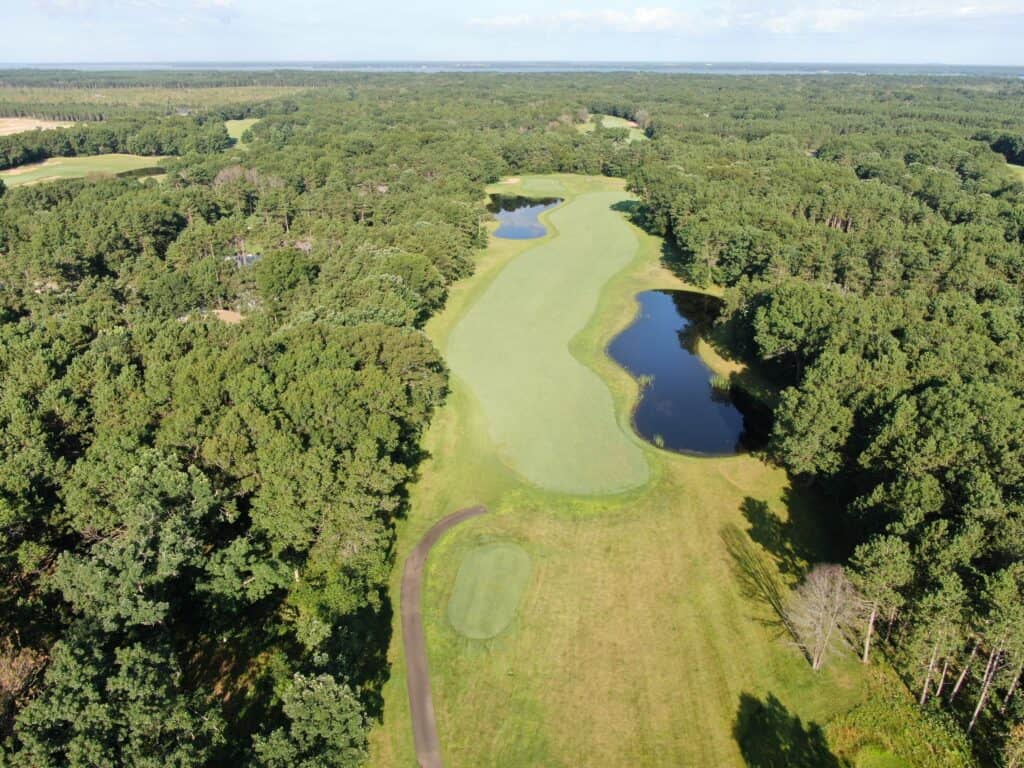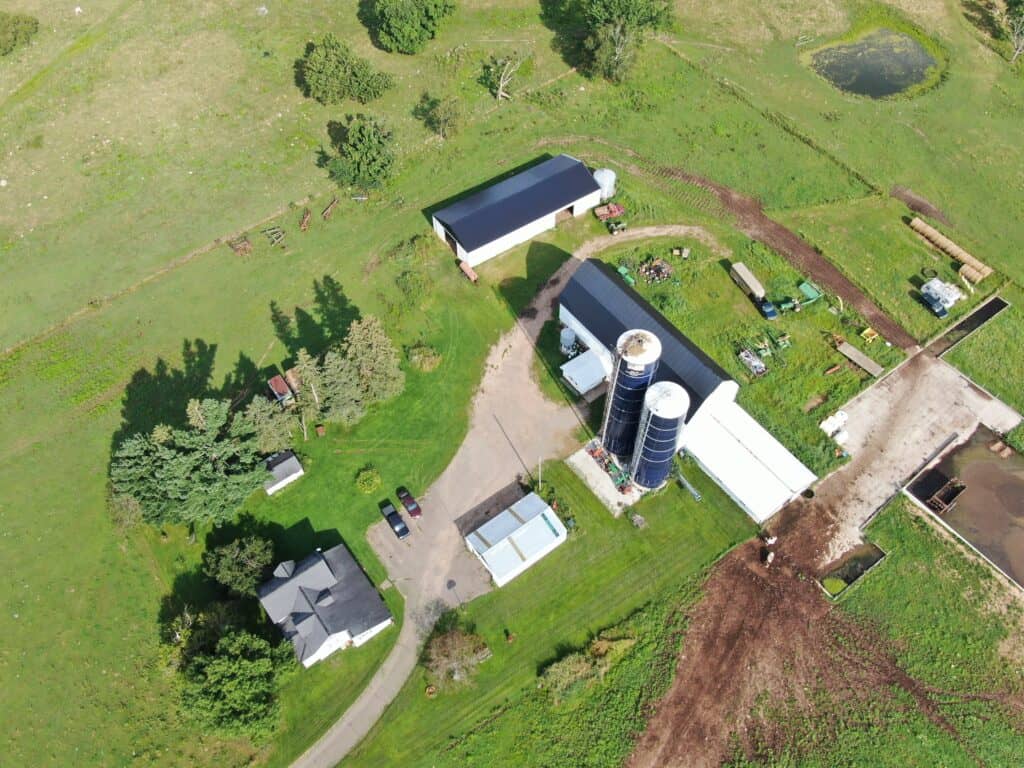
October 14, 2024
WISCONSIN RAPIDS – Fueled by 20 years in education and a drone epiphany at a homecoming celebration, former history teacher Jeremy Akey launched Flying Circus Drone Service in spring 2024.
“Things haven’t gone as expected but in a good way,” Akey said. “I thought we were going to be doing real estate stuff, things of that nature, but the business has gone in a totally different direction. Our niche seems to be showcase videos, as we call them, where we are working with businesses and communities to help them showcase their town or business. A lot of the stuff we’re putting together is content for their social media feeds. It’s been a more fun direction for us, to be honest.”
Akey said among other things, Flying Circus Drone offers or will eventually offer drone service in the following areas:
- Aerial cinematography/photography for businesses, communities
- Real estate
- Breaking news journalism
- Golf courses
- Insurance company support
- Construction/landscaping support
- Agriculture
- Deer carcass recovery
A modest start
Before launching a drone service business, Akey said he taught social studies for 15 years and then spent six years as a technology integration specialist in the Westfield School District – “that’s where I was introduced to drones.”
“We had a drone in the tech department,” he said. “Every year, we took some homecoming pictures of the entire class on the hill in Westfield. That was the first time I ever flew one – like a little five-minute picture, and I was hooked from there.”
Akey said folks joke that because he played a lot of video games “back in the day,” he’s been training to fly drones his whole life.

“The hand-eye coordination is paying off dividends now,” he laughed.
From there, Akey said a real-estate agent encouraged him to get his FAA drone pilot’s license, also known as a Part 107 remote pilot certificate.
“He thought it might be a nice little side gig for me as an educator,” he said. “That’s why I thought I was going to be doing real estate drone work.”
Though he no longer teaches in Westfield, Akey said because he’s now a small business owner, he stepped back into the classroom this year – “in Wisconsin Rapids as a business teacher.”
“It certainly wasn’t in the plans (to go back into teaching),” he said. “My neighbor pointed out that there was an opening, so I said to myself, ‘it can’t hurt to at least inquire about it.’ I ended up getting the job. Eventually, I hope to teach some small business classes.”
Because he teaches during the day, Akey said that means his drone service work occurs in the evenings and weekends.
“Obviously, I’m hoping my drone service takes off even more, but I’m really hoping I can keep doing both the education and the drone thing,” he said.
Business now
Akey said for now, it’s him and his wife who run operations.
“My wife is my main spotter and video editor,” he said. “When I have a drone in the air, I need to concentrate on running the controls – I can’t be looking in the sky for my drone and running it remotely at the same time … that’s where my wife comes in.”
Akey said it’s easy to lose sight of a drone, especially in a wooded area.
“Having a spotter allows you to fly beyond your vision of sight,” he said. “The drones I have can go a mile or two away, but some of the more expensive ones can go even further. I use a visual observer every time because it allows me to focus on my controls. Some people only bring the observer if they feel the situation warrants it.”
For example, Akey said if he’s capturing a neighborhood from a decent distance away, “I’ll position my visual observer around that neighborhood.”
“If I can’t see the drone, they can, and then they can communicate with me,” he said.
Getting certified
A Part 107 certificate is needed for anyone who commercially profits from the use of a drone, Akey said – “in other words, making money from the selling of your drone pictures/videos.”
“Flying a drone without a remote pilot certificate in U.S. airspace is a federal crime and can result in serious penalties,” he said. “People might not be aware, but to operate a drone for commercial purposes – any drone flight operations that result in direct compensation or are used to advance a business – you need the Part 107 certificate.”

Akey said examples of this include taking photos at a wedding, taking photos to help sell a property or service, doing roof inspections, taking pictures of a high school for the school’s website or surveying a construction site.
“There can be some pretty severe penalties for non-compliance,” he said. “I’d say the most common way people violate Part 107 is they use it for YouTube. Maybe I’m a fly fisherman and I’m having this drone follow me as I fly fish. That’s fine and dandy – you can do that – but the second you become monetized on YouTube, now you have to be Part 107 certified.”
Akey said Part 107 certification also gives peace of mind to the general public.
“From Uncle Sam’s perspective, they have the general public to worry about,” he said. “Some people get nervous when they see drones flying around – who’s doing this or who’s spying on me? When you’re registered as a pilot, you’re also registering an aircraft. If my drone is flying around in a neighborhood, it’s registered so they know what’s up there.”
Akey said drones operate off GPS.
“I can tell you, as a former tech guy, your technology will tell on you,” he said. “My drone will show how I flew from this latitude to that latitude and even take random snapshots I don’t have control over. If you see a drone flying in your neighborhood, you can see who that is. The government wants accountability and to know who’s up there. That also lets them know if someone is being reckless and helps them track down that person, too.”
Akey said getting certified “was not easy.”
“It’s an online learning class, and I literally took it three times because I didn’t want to fail the test,” he said. “It was probably the hardest test I’ve ever been associated with. I got 90% on that.”
The rest of the learning comes from hands-on experience – “flying a drone and getting a feel for it.”
“There isn’t an actual flight requirement, but that takes care of itself, in my opinion – natural consequences, right?” he said. “If you’re reckless with your drone and you don’t fly smart, you’re going to lose it, even with all the safety features these things come with.”
Evolving technology
Akey said most of the drones he uses cost at least $5,000 and run off an independent remote control or through a smartphone.
“One of the biggest tools that has been added to a lot of the drones is they are now surrounded with sensors, so it’s getting harder to crash them,” he said. “It’s quite amazing how anticipatory they are.”

Akey said some of the newer drones will navigate obstacles for you.
“It used to be where if you’re flying a drone and you lost signal, it just kept going… so there goes your $5,000 investment,” he said. “Right now, a lot of them will return to the point they took off from. It knows where it’s at because of GPS.”
Akey said drone cameras have also improved greatly.
“The next drone I’m looking at getting has two cameras instead of one – and it’s affordable,” he said. “This one would have a resolution camera and then a thermal camera, and that’s pretty exciting for us because that would allow us to get into the inspection side of things. That’s kind of where we’d like to go next – so like inspecting windows to look for air leaks, for roofs, etc. If I were inspecting a Walmart, for example, I could help them inspect the entire roof and look for hot and cold pockets because that would indicate water.”
A name with meaning
So why name a business Flying Circus?
As a history teacher, Akey said students constantly bombarded him with a question: “Mr. Akey, what’s your favorite era?”
“While pirates and frontiersmen held a certain charm, World War I dogfights over the Western Front truly captivated me,” he said. “That was sparked by childhood afternoons spent watching Snoopy battle the Red Baron.”
The original Flying Circus – Der Fliegende Zirkus or Richtohen’s Zirkus – Akey said was the famous and feared German fighter squadron, led by the Red Baron.
“Their colorful planes combined with their mobile air bases (which used tents similar to the ones used in the circus) earned them the moniker ‘Flying Circus,’” he said. “Today, a flying circus is an organized group/club of pilots who engage in flying exhibitions and/or formations of rotary planes.”
 The Aissen Tree Farm celebrates 35 years in business
The Aissen Tree Farm celebrates 35 years in business Westby Creamery announces $14 million expansion
Westby Creamery announces $14 million expansion








